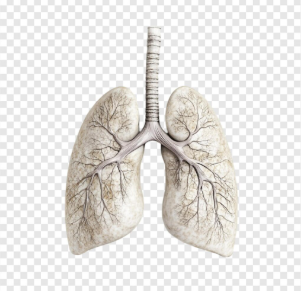The fundamental purpose of oxygen therapy is to help provide and maintain healthy blood oxygen levels. Someone who is suffering from problems such as sleep apnea, emphysema, and other breathing problems can be at risk from hypoxemia, which is low blood oxygen levels.
Oxygen therapy is widely used for various health conditions and can be administered in different ways based on the patient’s needs. If you search for oxygen therapy in Denver, for instance, you will see how and why this therapy plays a crucial role in improving oxygen levels in the body and supporting overall health and well-being.
Here are some key points and relevant information about oxygen therapy.
Who is it for?
Oxygen therapy is a recommended therapy for people with lung diseases and a wide range of breathing problems. It provides supplemental oxygen when it is needed to enable a patient to enjoy safe and normal breathing functions.
Here are some examples of conditions where oxygen therapy can provide a viable solution and breathing assistance.
Chronic Obstructive Pulmonary Disease (COPD)
COPD covers a range of lung diseases. These include chronic bronchitis and emphysema.
These are classed as progressive lung diseases, and can often lead to decreased lung function and difficulty breathing. Oxygen therapy is designed to help relieve symptoms for COPD patients by delivering a healthy oxygen level. The required level of oxygen saturation is 95% or above. Oxygen therapy intervenes when saturation levels fall below 88%.
Heart Conditions –
There are certain heart conditions, such as congestive heart failure, which can result in decreased oxygen delivery to the body. Oxygen therapy may be prescribed in those circumstances to alleviate strain on the heart and improve overall oxygenation.
Sleep Apnea –
Someone with some form of sleep apnea may benefit from oxygen therapy. It is delivered during sleep to ensure proper oxygen levels and reduce the frequency of apnea episodes.
Overall, there are numerous conditions where oxygen therapy could provide viable relief and improve symptoms as a result of achieving the right levels of oxygen saturation.
Other notable conditions where oxygen therapy is suggested include – Cystic Fibrosis, Interstitial Lung Disease, and cases of severe asthma.
What Types of Oxygen Therapy are Offered to Patients?
The oxygen is delivered in either gas or liquid form. There are a number of ways it can be administered. These include –
Liquid Oxygen –
A container with pure oxygen in liquid form is converted to a breathable gas when you release the oxygen.
Compressed Gas –
This is stored in a large pressurized cylinder and has a regulator to control the flow. It is fitted with a regulator to control the flow of oxygen and a gauge to monitor how much oxygen is in the tank.
Oxygen Concentrators –
This device is designed to gather air from the room and compresses oxygen from the air while removing nitrogen at the same time. This allows you to breathe in purified air.
What are the Benefits of Oxygen Therapy?
Although there are a number of clearly defined benefits associated with the use of oxygen therapy it should be stressed that it is a therapy designed to alleviate symptoms rather than provide a cure for respiratory conditions.
Oxygen therapy is generally viewed as a positive solution that helps deliver the right oxygen levels to your body when it is needed. Some of the most obvious benefits include –
Improved Oxygenation –
Our bodies need to maintain a healthy oxygen level of at least 95%. Healthcare providers prescribe oxygen therapy when levels are below that target. By improving oxygenation levels, you can feel healthier and counteract some of the symptoms of your underlying condition such as shortness of breath and fatigue.
Improved Exercise Capacity –
Oxygen therapy allows someone with a respiratory condition to engage in physical activity more comfortably. By providing supplemental oxygen during periods of exertion it can help boost your overall health profile and quality of life.
Improved Sleep Quality –
A key issue for many is the potential for oxygen therapy to combat sleep-related breathing disorders. Oxygen therapy is designed to help improve sleep quality and reduce the issue of daytime sleepiness.
Reduced Heart Strain –
It stands to reason that your heart can be put under greater strain when you are not getting the right level of oxygen to your body. By increasing oxygen levels, oxygen therapy can reduce strain on the heart. This therapy can be especially beneficial if you have a heart or lung disease.
Oxygen therapy is viewed as a safe and viable treatment option to help alleviate the symptoms of various respiratory and cardiovascular conditions.
Under the continued guidance of a suitable healthcare professional, oxygen therapy can deliver a positive solution by providing the right level of oxygen to your body that it needs to function properly.






